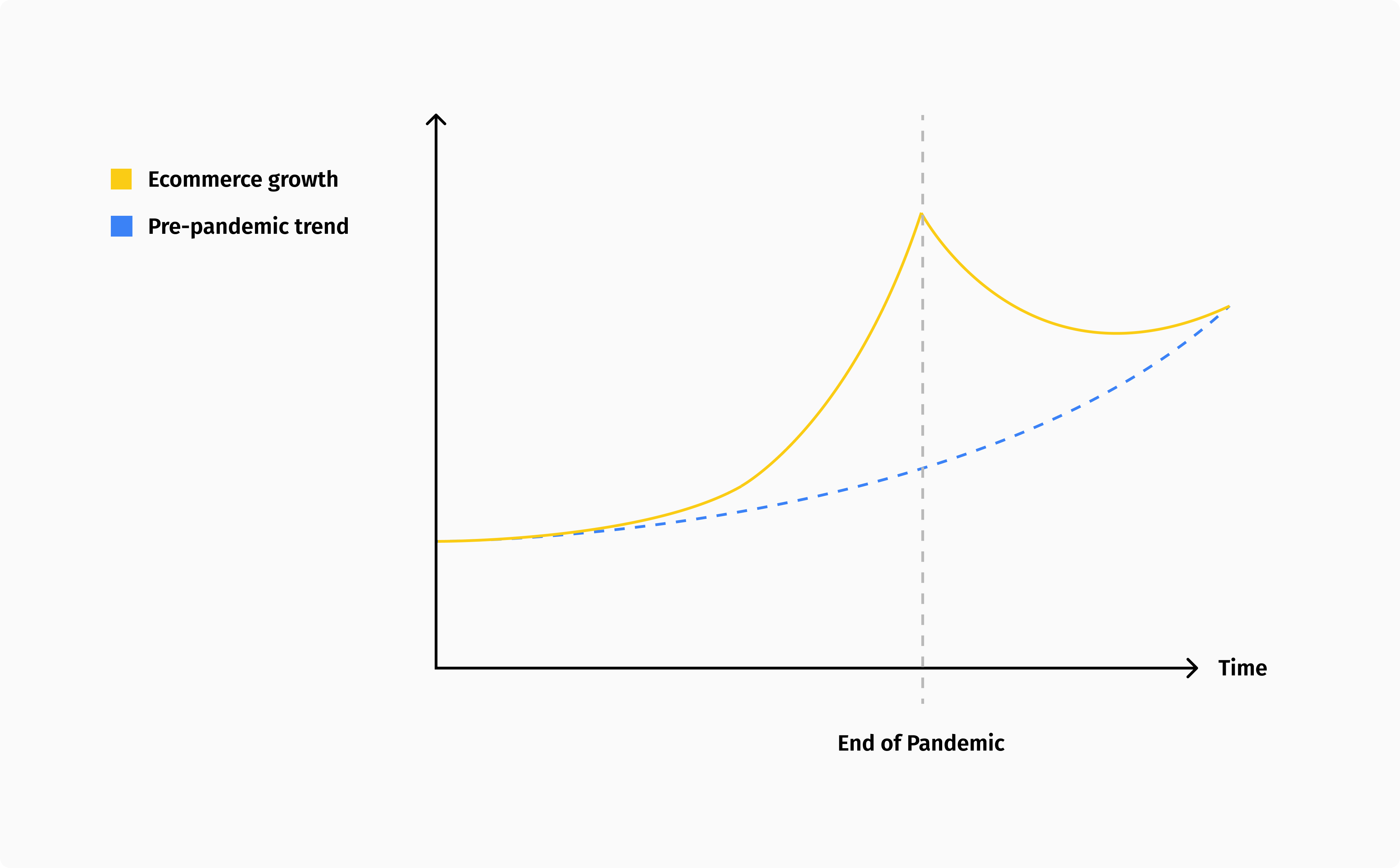The COVID-19 pandemic has caused unprecedented conditions around the world. For a certain period of time, people were locked away in their homes. Human touch became just a sweet memory that belongs to the past and will never return.
Nevertheless, we had to eat, drink, wear, and have fun, even within the four walls of our homes. Since all brick-and-mortar stores were closed, we had no choice but to purchase everything online. Thus, ecommerce boomed, growing at a rate never seen before.

During that period, many companies and investors bet on that fast-growing curve, foreseeing a world that would never be the one we knew. These projections prompted companies to accelerate their hiring like never before, while investors sought to take advantage of the new business opportunities that would arise from this new world.
Meanwhile, physical stores were struggling to survive. They weren't prepared for such an abrupt change. Having no digital presence, their sales dropped to zero, putting their entire business at risk. In some cases, merchants set up alternative sales channels, such as WhatsApp, to accept orders from their existing customers and get paid remotely. Nothing more, though.
Then, fortunately, things gradually returned to normal. People began interacting with the real world again, appreciating all the in-person experiences they had always taken for granted. Stores, restaurants, and malls reopened. Therefore, the ecommerce growth spike dropped, reverting to the trend prior to the pandemic.

There is, however, something that has changed forever for consumers and merchants. The pandemic has forced everyone to learn how to use smartphones to shop online. In stores, people have begun using contactless payments, rather than cash or physical credit cards, out of concern for infection. WhatsApp has remained a very effective, if rudimentary, sales channel. Merchants have learned—the hard way—that they cannot shut down their businesses if their customers cannot visit them in person.
Unlike many expected, the pandemic has not accelerated ecommerce, which continues to grow at the same pace as always. Despite lockdowns, in-person shopping isn't dead. What has been accelerated, instead, is the digitalization of physical stores.
In the new world, customers want to pay in stores with the same digital wallet they use online. They don't wish to carry around dozens of shopping bags during shopping sprees. Instead, they want their purchases delivered to their homes, like when they shop online. They demand more digital content to enhance the physical experience of seeing, touching, and smelling the products in store.
We are living in a new normal. This is the type of customer experience we should keep in mind when designing a commerce stack in 2024. To some extent, it's about getting back to the basics. We're talking about digital ways of selling and shipping physical goods. Nothing too fancy. It's "normal" in its very own sense. But there’s nothing more complex than making complex things simple.